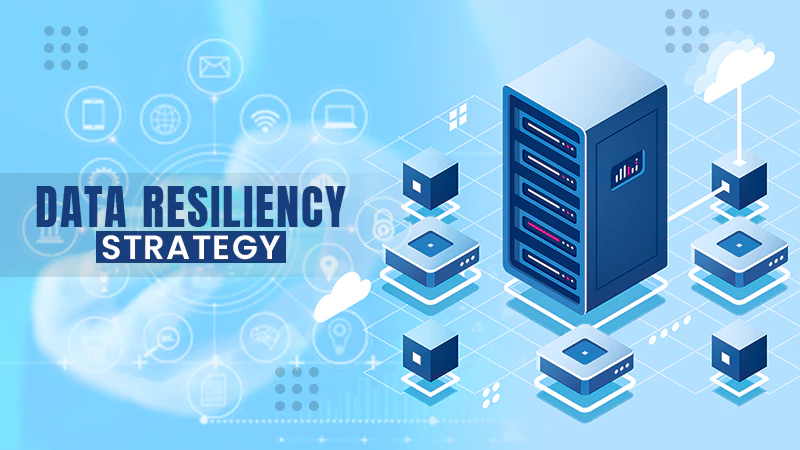In recent years, the demand for renewable energy development is growing and creates many opportunities for promising companies. In this article, we will talk about renewable energy software that is being developed and implemented in various industries such as wind energy, solar energy, and water energy.
What are the Reasons to Build Renewable Energy Software?
Many countries are aiming to increase the share of renewable energy sources in their energy supply. Many factors contribute to this interest in renewable energy sources, such as:
- New environmental standards are accepted around the world.
- Government support for clean energy research.
- Increasing investment in clean energy technologies and the associated infrastructure.
- Research of new sources of clean energy.
- The rapidly declining cost of integrating renewable energy and storage technologies.
- The increasing availability of renewable energy software (SaaS, IaaS), service distribution, and flexible collaboration/pricing models.
- Large-scale cultivation of the transition to sustainability and carbon neutrality.
- The rapid development of technologies – IoT, cloud, network solutions, predictive analytics, and machine intelligence.
Priorities for Digital Transformation in the Energy Sector
Due to the complexity and fragmentation of the systems that must be built as part of digital transformation, the most advanced companies focus on achieving “quick wins” – getting tangible results in the short term. As a result, the mobilization of the entire company provides the necessary impetus to launch longer-term initiatives.
When carrying out digital transformation in the energy sector, work is carried out in three areas.
1. Digitization of the Current Operating Model
Focus on “quick wins”, such as identifying processes where there is the greatest potential for cost reduction and improved customer experience. The most advanced companies are reimagining or building from scratch back-office processes to realize the potential of robotization. Priority areas may include the following solutions:
- robotic process automation,
- digitalization of internal interfaces (“junctions”) and interaction with the consumer,
- increasing the availability of data and its use in decision-making,
- digitalization of personnel management tools,
- IT infrastructure upgrade.
In addition to automating current processes or building a multi-channel system of communication with the consumer, digitalization involves a deep restructuring of the organization’s internal processes – from reducing the number of steps and pages of documentation to automating decision making. In the distribution of electricity, the first candidates for digital transformation are processes that involve a large number of repetitive actions: connecting new consumers, maintaining the network, managing investments, equipment data, and losses.
2. Using Advanced Analytics
The company must have a plan to “cleanse” and standardize the data it collects from multiple sources. Sources and data models should be interconnected with each other, and the responsibility for maintaining collection and storage systems is fixed within the organization – with the presence of a CDO (Chief Data Officer) and responsible employees in departments. In addition, it is necessary to build the competence of employees in the use of advanced analytics, because the introduction of technologies, such as smart meters, significantly increases the amount of data compared to the manual collection, and deep analysis of this data cannot be carried out using standard tools.
3. Learning New Technologies
Manage an extensive portfolio of projects. Launch pilot projects and track technology development by analyzing costs and benefits, assessing the readiness of technology solutions, and putting them into commercial operation. Energy companies should also partner with financial, e-commerce, and telecom players to expand their portfolio of products and revenue streams. The distribution and development of technologies depend on the specific region, the availability of state support, and the willingness of the company to invest. In the short term, the technologies being implemented are aimed at improving efficiency, and in the medium and long term, at increasing customer value and new service offerings.
Advantages of Renewable Energy Software
Now let’s discuss the advantages of developing your own renewable energy software
- Deep data analytics, which includes predictive analytics, big data, and data mining powered by machine learning and artificial intelligence. Data mining and artificial intelligence are already influencing how energy companies make decisions and will change the status quo for all participants in the energy supply chain in the future. In terms of exploration and fossil fuel production, the development of digital technologies will facilitate the emergence of new methods of oil and gas exploration.
- Augmented, assisted, and virtual reality (AR / VR) on the basis of which you can create various expert systems, interactive electronic technical manuals, display information about equipment operation modes (including telemetry), etc. As a result of the introduction of AR / VR technologies, labor productivity increases by reducing the time for performing operations, the time to prepare for operations, and optimizing the movement of personnel.
- Digitization of business processes will make it possible to optimally redistribute personnel across projects, reduce the number of errors and accidents, and ensure the transparency of commercial decisions.
- Cloud computing is the provision of on-demand network access to a certain pool of configurable computing resources (servers, storage, databases, software). Cloud computing enables faster innovation, resource flexibility, and economies of scale. The cloud will also become a valuable resource for energy buyers, allowing firms to implement initiatives aimed at attracting consumers, for example, by promoting a “green” company image.
- Cybersecurity is the protection of systems, networks, and programs from digital attacks. Typically, “cyber attacks” are aimed at gaining access to data, changing or destroying confidential information, and disrupting business processes.
- Blockchain and distributed ledgers are shared and distributed data structures or ledgers that can securely store information about digital transactions without the use of a central control point. Blockchain and distributed ledger technology can be used for risk management or green certificate trading.
- The Internet of Things (IoT) and Industrial Internet of Things (IIoT) is a vast network of connected things and people that collect and share data about the environment, the device itself, and how it is used.
- A digital twin is a virtual copy of a technical object that reproduces and sets the structure, state, and behavior of the object in real-time. The digital twin is a key basic element of a high-tech control system. Among the high-tech facilities, the management of which is expedient to be organized on the basis of digital twin technology, include, for example, modern distributed energy systems, including various power receivers, local generating equipment, and energy storage devices.
- Drones and unmanned aerial vehicles (UAVs) are unmanned vehicles powered by technologies such as computer vision and artificial intelligence. Today, UAVs are used, for example, for scheduled diagnostics and inspection of the state of power lines, emergency recovery work, the creation of digital and cadastral plans, support for the construction and reconstruction of power lines, and much more. others
- Robotics, significantly changes the energy industry, transforming processes such as the production, operation, and diagnostics of various equipment. For example, using robots that can navigate a gas distribution system and use sensors to measure wall thickness and stresses can significantly reduce the amount of earthwork required to inspect a pipeline system.







